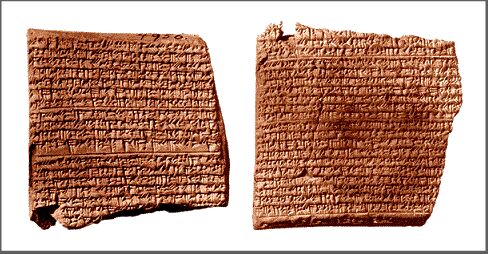A number of different groups, for different reasons, call into question the dating of the Babylonian captivity and the destruction of Jerusalem.
In this article the authors claim that the end of Daniel’s 70 Weeks is at the destruction of the second Jewish temple in 70 AD, and they claim that the secular chronology has added 166 years in order to synchronise the beginning of the 70 weeks with the destruction of Jerusalem and the first Jewish temple by Nebuchadnezzar. The generally accepted date for Jerusalem’s destruction is 586 BCE, which is 656 years before 70 AD. As the 70 weeks of Daniel span 490 years, their answer is that the real date of Jerusalem’s destruction was 166 years later!
Author Chris White makes a similar claim in this article, which is based on Charles Cooper’s research. He starts the count of the 70 weeks from the decree of Cyrus, which was around 536 BCE, but ends at the same time (70 AD) and so approximately 116 years would have to be shaved off the secular chronology in his view.
In his 1939 book Messiah: His first coming scheduled David Cooper similarly starts the 70 weeks at the decree of Cyrus, but he has the 69th week ending at the crucifixion and so he suggests only 82 years need to be removed from the secular chronology.
All these theories can be shown to be false by the Babylonians themselves. They made incredibly accurate and detailed observations of the heavens, recorded on clay tablets, many of which have survived to the present day. We will concentrate on a single tablet known as VAT 4956. The following image of this tablet is from http://www.lavia.org/english/Archivo/VAT4956en.htm.

The interested reader is encouraged to visit the above site where the translation of the tablet is given. We will just give a summary here.
It first identifies itself as being in the 37th year of Nebuchadnezzar, and it lists many astronomical and weather related observations during that year. We have chosen ten observations to focus on due to their unambiguity and ease of modelling, which is more than enough to identify with an extremely high level of precision the year in which these observations were made. The observations we will use include:
- On the first day of the first month Saturn was in front of the constellation Pisces Austrinus.
- On the twelfth day of the first month Jupiter rose exactly as the sun set.
- On the first day of the second month Saturn was still in front of Pisces Austrinus.
- On the first day of the second month Mercury had already set by sun set.
- On the fourth day of the second month Mars was in Praesepe.
- On the eighteenth day of the second month Venus was 1 cubit and 4 fingers above alpha Leonis (Regulus).
- On the first day of the third month Mars was 4 cubits in front of alpha Leonis.
- On the first day of the third month Mercury was also 4 cubits in front of alpha Leonis.
- On the first day of the third month Jupiter was above alpha Scorpii (Antares).
- In the third month there was an estimated lunar eclipse.
In order to test this we calculated the locations of the planets and the moon over the 1,200 year period from 1 BCE to 1,200 BCE and compared the calculated positions against the above observations. In only one year did all ten observations occur, and that year was 568 BCE. The results of these calculations are displayed in the following graph, where the filled boxes indicate that the corresponding observation occurred in that year. We’ve coloured the year where all ten observations occurred green and other years where at least half of the observations occurred we’ve coloured orange (in order to show just how rare it is for even five or six, let alone all ten, observations to line up).

Based on these results, and even allowing a considerable margin of error, we calculated that the chance of the same set of observations occurring in any one year was about one in over 43 billion years. As the universe is supposed to be 13.8 billion years old, even if the universe and our solar system was three times older than that, the exact set of observations recorded on that tablet would still only be expected to occur in one single year.
Therefore any interpretation of Daniel’s 70 weeks that relies on removing years from the secular chronology or suggesting different dates for the Babylonian captivity (which commenced in the year of Nebuchadnezzar’s ascension, 605 BCE), the sacking of Jerusalem (in his 19th year, 586 BCE) and the decree of Cyrus (in 536 BCE) must be rejected.
You might also be interested in these series: